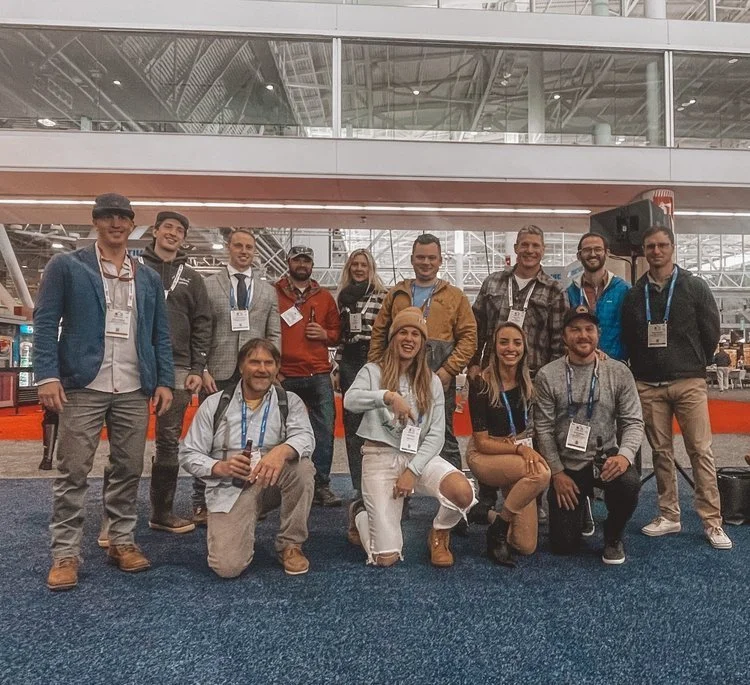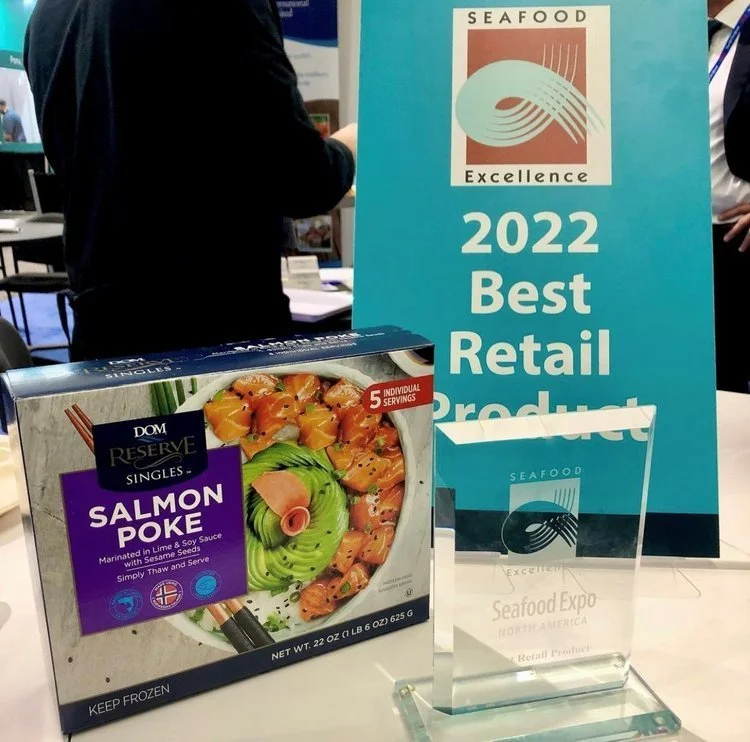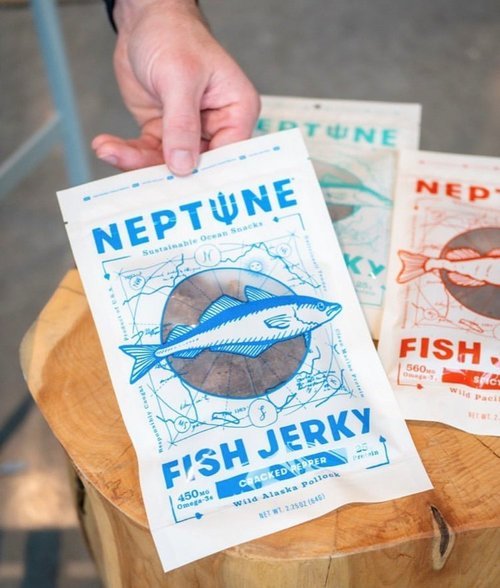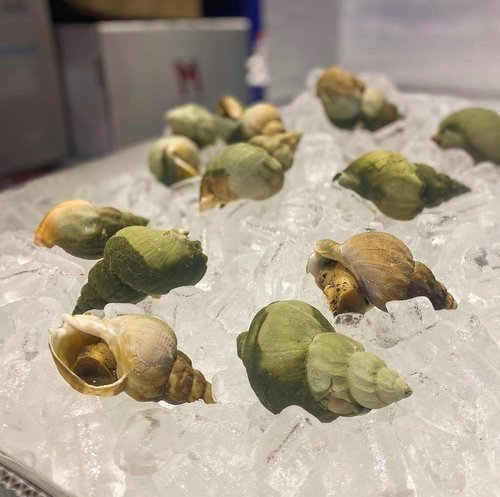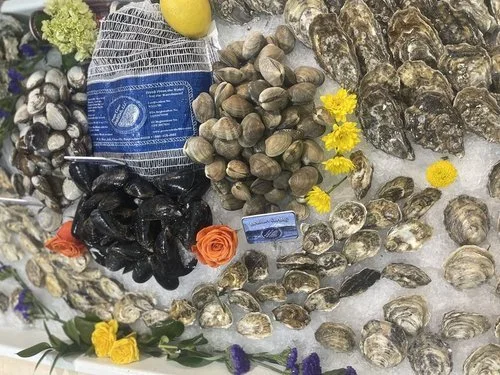SENA 2022: Upcoming Trends in the Seafood Industry
There were two main themes that dominated SENA22: (1) aquaculture and fisheries equipment and processing innovations, and (2) up-and-coming seafood consumer trends.
Seafood Expo North America (SENA) is North America’s largest seafood trade event, bringing together buyers and international suppliers looking to meet, network, and conduct business in the North American market. From farmed fish, shellfish, and seaweed products to wild-capture seafood, and “value-added” products like fish sticks or clam chowders, SENA is a lens into the complex world of global seafood trade.
The event itself is multifaceted — with several hundred exhibitors showcasing products on a convention center floor spanning the length of five football fields, to the yearly Seafood Excellence Awards, the annual Oyster Shucking Competition, and 28 extremely educational conference sessions focusing on up-and-coming trends in seafood.
Let’s take a deep dive into some highlights of this year’s SENA 2022.
2022 Seafood Excellence Awards
The 2022 Seafood Excellence Awards winners were presented on the first day of Seafood Expo North America/Seafood Processing North America. Toronto-based DOM International Ltd. won the Best New Retail Product nod for its DOM Reserve Salmon Poké, while Bakkafrost, based in the Faroe Islands, received the Best New Foodservice Product award for its Native Hebridean Smoked Scottish Salmon.
The Seafood Excellence Awards recognize the product leaders in the North American seafood market. Products are judged according to several criteria, among them uniqueness and appropriateness to the market, taste profile, market potential, convenience, nutritional value, and originality.
3 . . . 2 . . . 1 . . . Go Shuck!
The Seafood Excellence Awards wasn’t the only competitive streak in this year’s SENA. The conference always incorporates a traditional Oyster Shucking Competition for a dose of healthy competition. World Champion oyster shucker Shucker Paddy serves as the (Oyster) Master of Ceremonies, and gets the crowd roaring as some of the Nation’s best shuckers compete for the ultimate title. This year, 13 shuckers raced their way through a dozen oysters — 6 from the East Coast, and 6 from the West Coast. Two-time Wellfleet Champion Steve Boreen captured this year’s top prize, and Maine’s hometown favorite Andy Rogers of Jolie Rogers secured an amazing second place finish.
Highlights from the Conference Series
There were two main themes that dominated the SENA Conference Series: (1) equipment and processing innovations in both the aquaculture and fisheries sector, and (2) up-and-coming seafood consumer trends.
Transforming Aquaculture: The Future of Seafood Must Include Innovation
Presenters: Sylvia Wulf (AquaBounty Technologies); Charlie Baggs; Joseph Lasprogata (Samuels and Son Seafood Co)
The recent report from the International Panel on Climate Change (IPCC) stated that global warming is likely to rise around 1.5 degrees-C within the next 20 years. Aquaculture in marine and freshwater environments is extremely vulnerable to the growing impacts of extreme weather and climate change that will accompany this temperature rise. Given the short runway to find viable solutions to mitigate the worst impacts, and to ensure food security for the world’s growing population, we will need to deploy the rapidly developing tools from the biotechnology sector. Cultivating what are essentially wild organisms in farm settings has many challenges when it comes to growth and feed efficiency, not to mention disease resistance and other desirable production traits. Farming seafood will become even more challenging in the rapidly changing and increasingly unpredictable environment. Innovation and the use of technology – including genetic engineering and gene editing – are viable solutions to provide a safe, secure and sustainable source of fresh seafood. It is not difficult to imagine the development of more temperature-tolerant, disease-resistant, and faster-growing aquatic species for aquaculture use coming down the road.
“Ditch the Shucking Knife, Use HPP Technology: 100% Meat Extraction, Food Safety, and Shelf-Life Extension”
Presented by Dr. Vinicio Serment-Moreno of Hiperbaric + Hugh Reynolds of Greenhead Lobsters
High Pressure Processing (HPP) technology is revolutionizing seafood processing, offering food safety, freshness, 100% meat extraction and new market opportunities. HPP is a non-thermal technology that uses cold water and high pressure to eliminate common seafood pathogens such as Vibrio and Listeria, and slows down the growth of spoilage microorganisms. The use of cold water to generate pressure minimally alters the delicate sensory and nutritional properties of seafood. Therefore, HPP is highly regarded among consumers and processors alike, as it achieves a perfect balance between safety and quality, with a natural approach.
Hugh Reynolds, the owner of Greenhead Lobsters, joined Dr. Serment-Moreno to share his experiences with HPP technology at his lobster processing facility in Stonington, Maine. Greenhead Lobster is a family owned and operated lobster business that processes and sells live and lobster meat products on both the retail and wholesale levels. In order to keep up with his demand, Mr. Reynolds employed HPP technology to effectively process thousands of pounds of lobsters daily. The HPP technology also ensures that maximum meat is retrieved from the lobsters, and the shelf-life of the lobster meat is extended.
FMI Power of Seafood 2022: Consumer Insights into How and Why they Shop for Seafood
Presented by Rick Stein (VP of Fresh Foods), Richard Castle (Director of Seafood - Giant Eagle), Steve Markenson (Director, Research & Insights - FMI Food Industry Association)
This presentation focused on the 2022 Power of Seafood Consumer Report, from the Food Industry Association (FMI). This Report provides insights into shopper behavior and data provided is considered a tool for retailers in their efforts to grow seafood sales. According to the 2022 Report, the FMI seafood department sales came in to $16.9 billion - a 0.9% rise in 2021. Several consumer trends have spurred higher seafood sales, among them increasing seafood consumption in frequent seafood consumers, more shoppers cooking and preparing seafood at home amid the pandemic, and more shoppers choosing seafood for sustainability reasons
The 2022 “Power of Seafood” found that 59% of shoppers are frequent (two or more times a week) or occasional (once a month to once a week) seafood consumers, and frequent seafood consumers are eating more seafood at mealtimes than in past years (55%). Forty percent of seafood consumers said that they’re buying new or different kinds of seafood and value-added seafood options, such as heat-and-eat or grab-and-go seafood meals (44% buying more), sushi (43%) and fresh seafood that’s marinated or seasoned (41%).
About half of seafood consumers (49%) are cooking more meals with seafood during the pandemic, and 73% of seafood consumers who are cooking more are more comfortable cooking seafood.
“This heightened confidence means seafood shoppers are looking to gain new exposure to seafood products,” added Stein. “Shoppers want to learn more about how to cook, prepare and flavor seafood (80%) and discover unique ways to cook seafood (83%). This represents a clear opportunity for food retailers to be a stronger resource for shoppers looking to further their seafood-based culinary skills.”
Some seafood consumers (38%) said that they were choosing seafood more often because they believe it’s environmentally friendly or sustainable in general, compared with other proteins. Half of seafood consumers (50%) noted that sustainability claims or certifications have a major impact on their purchase decisions, but only 28% described themselves as very knowledgeable about “sustainable seafood.”
Food retailers can leverage this knowledge gap by educating shoppers about sustainability certifications, as well as seafood capture and raising practices,” observed Stein. “Being a resource for this information can help build loyalty among seafood shoppers.”
How Do Millennials Make Purchasing Decisions
Presenters: Luke Holden (Luke’s Lobster), Nick Mendoza (Neptune Snacks), Robert Snyder (Acme Smoked Fish), Meghan Russell (Niceland Seafood)
Millennials are the most informed generation of consumers ever. More importantly, they make purchasing decisions based on their value systems. They may have varied priorities; some are focused on seafood sustainability, others on social performance, others on local or wild harvest. What they share is an expectation for honesty, communication and transparency from the companies and individuals who harvest or sell the seafood that they buy. Companies that do not anticipate the need to connect with this customer base won’t be able to catch up later; you can’t create authenticity on the fly.
The presenters shared that their goal was to establish greater visibility into where your fish comes from. Presenters shared they wanted establish credible traceability that lets you interact with your food, such as approachable tech that lets you search for your favorite seafood, trace its origin, and easily pull up recipes and stories on the people behind the product.
The panelists agreed that consumers shop with their conscience. Distributors and retailers have an obligation to provide transparent, credible information about food so consumers can make their own personal choices that align with their values, goals and beliefs.


